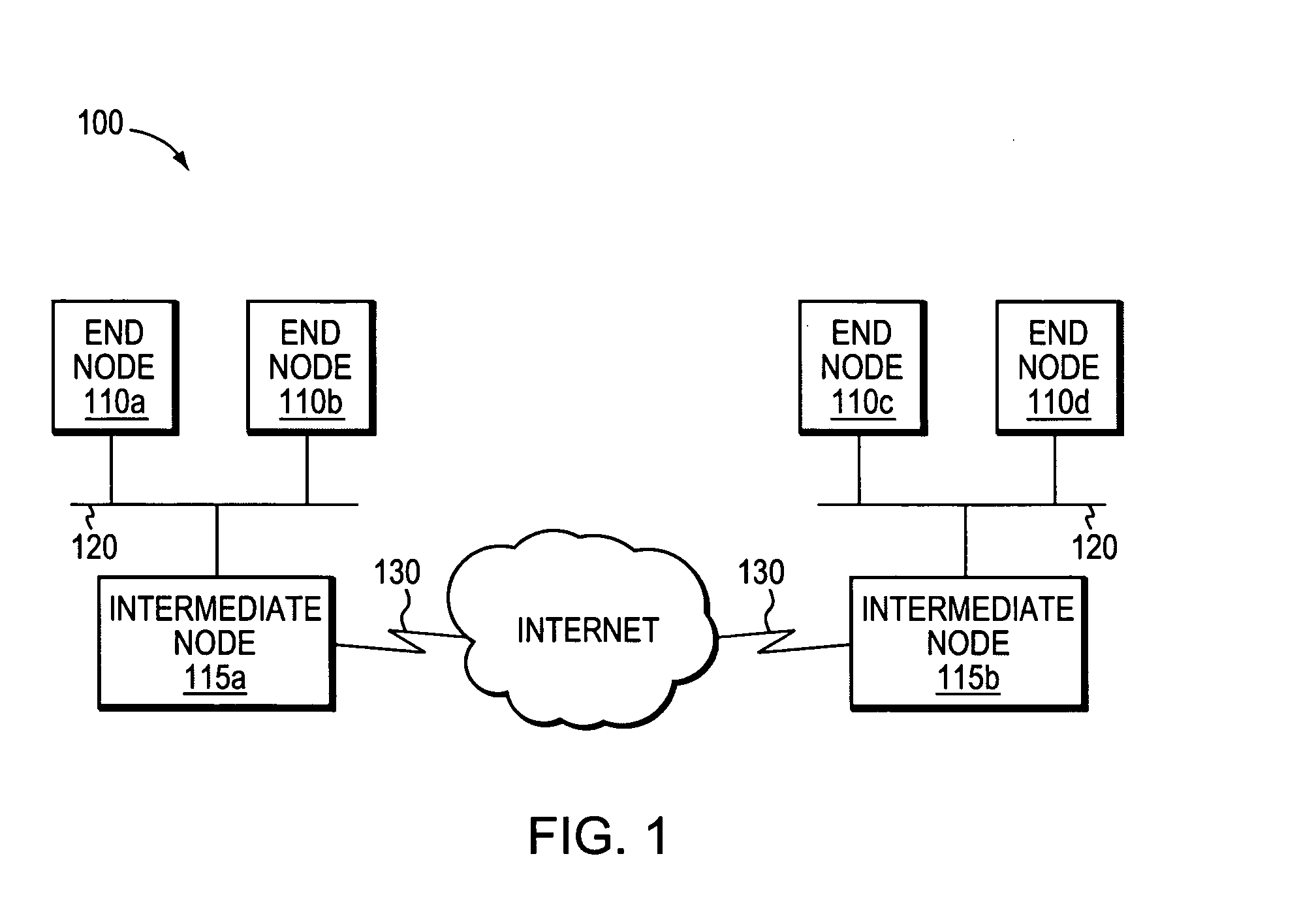Avoiding unnecessary RSVP-based preemptions
a technology of resource reservation and preemption, applied in the field of network communication, to avoid unnecessary resource reservation preemption
- Summary
- Abstract
- Description
- Claims
- Application Information
AI Technical Summary
Benefits of technology
Problems solved by technology
Method used
Image
Examples
Embodiment Construction
[0038]FIG. 1 is a schematic block diagram of an exemplary computer network 100 that may be advantageously used with the present invention. The network 100 comprises a plurality of interconnected network nodes, such as end nodes 110 and intermediate nodes 115. The nodes may be interconnected over local area network (LAN) links 120, point-to-point links, wide area network (WAN) links 130, wireless LANs, etc., to form the network 100. The interconnected network nodes may exchange data packets according to predefined sets of network communication protocols, such as the Transmission Control Protocol / Internet Protocol (TCP / IP) and the Resource Reservation Protocol (RSVP).
[0039]FIG. 2 is a schematic block diagram of an exemplary node 200, which is illustratively a router that may be advantageously used with the present invention as an end node or an intermediate node. The node comprises a plurality of network interfaces 210, a processor 220, and a memory 240 interconnected by a system bus...
PUM
 Login to View More
Login to View More Abstract
Description
Claims
Application Information
 Login to View More
Login to View More - R&D
- Intellectual Property
- Life Sciences
- Materials
- Tech Scout
- Unparalleled Data Quality
- Higher Quality Content
- 60% Fewer Hallucinations
Browse by: Latest US Patents, China's latest patents, Technical Efficacy Thesaurus, Application Domain, Technology Topic, Popular Technical Reports.
© 2025 PatSnap. All rights reserved.Legal|Privacy policy|Modern Slavery Act Transparency Statement|Sitemap|About US| Contact US: help@patsnap.com



